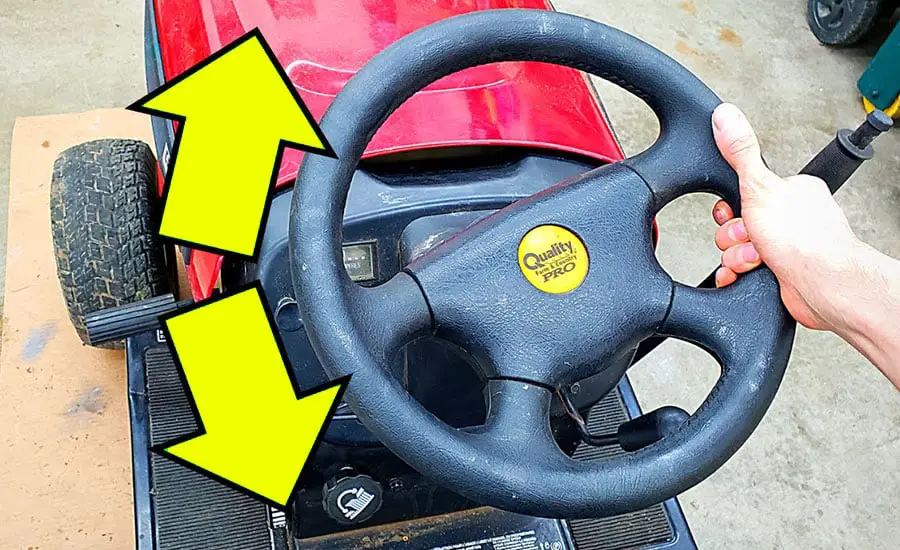On the Right Track: How to Fix Steering on a Riding Lawn Mower
On the Right Track: How to Fix Steering on a Riding Lawn Mower
Are you tired of battling with a riding lawn mower that refuses to steer straight? Does your once reliable companion constantly veer off course, leaving your lawn with a messy, uneven cut? It's time to take matters into your own hands and fix the steering on your trusty mower. In this guide, we'll walk you through the step-by-step process of getting your riding lawn mower back on track.
Avoid the Bumpy Road: Common Steering Issues
Before we dive into the solutions, let's take a moment to understand some common steering issues that might be plaguing your riding lawn mower. Identifying the problem will allow you to tackle it head-on and get your mower running smoothly again.

One common issue is a misaligned or loose steering gear or linkage. This can happen due to regular wear and tear or accidental damage. Another culprit could be a bent or damaged steering shaft. Additionally, worn-out or defective steering bushings can also cause steering problems.
Now that we have a rough idea of the potential issues at hand, let's roll up our sleeves and get to work fixing the steering on your riding lawn mower.
The Journey Begins: Step-by-Step Guide to Fixing Steering
Grab your toolbox and let's hit the ground running! With the following step-by-step instructions, you'll be well on your way to addressing your mower's steering woes.
Step 1: Assess the Situation
Just as a captain examines the ship before setting sail, you need to carefully assess the current condition of your riding lawn mower. Take a close look at the steering gear, linkage, and shaft, examining them for any visible signs of damage or misalignment.
If you spot any issues, it's time to take a deeper dive and address them. Remember, proper diagnosis is the key to finding the right solution.
Step 2: Tighten Up the Loose Ends
One common problem with steering on riding lawn mowers is a loose steering gear or linkage. Fortunately, this is a relatively simple issue to fix. Grab your wrench and tighten any loose bolts or nuts you find. Ensure that all connections are secure, providing a stable foundation for your steering system.
Pay close attention to the pivot and tie rod connections, as these are often the culprits behind loose steering. Tightening them up will help to eliminate any play and improve your mower's control.
Step 3: Straighten the Crooked Path
If you've discovered a bent or damaged steering shaft during your assessment, it's time to straighten things out. You'll need a heavy-duty vice or a similar tool to hold the shaft securely in place. Gradually apply pressure to straighten the shaft, making sure not to exert excessive force that could break it.
Keep in mind that a damaged steering shaft may need to be replaced entirely if the damage is severe. However, for minor bends, this method should restore its functionality and get you back on track.
Step 4: Swap out the Faulty Components
Steering bushings can wear out over time or become defective, causing issues with your riding lawn mower's steering. In such cases, replacing the faulty bushings is the only viable solution.
Start by removing the old bushings using an appropriate tool—typically, a socket or bushing removal kit. Take note of their size and specifications to ensure you purchase the correct replacement bushings. Once you have the new bushings in hand, carefully install them in place, securing them tightly.
Step 5: A Smooth Ride Ahead: Regular Maintenance
Now that you've addressed the immediate steering issues on your riding lawn mower, it's crucial to keep up with regular maintenance to prevent future problems. Just like any mechanical equipment, your mower requires periodic upkeep to stay in top-notch condition.
Make it a habit to inspect the steering system, checking for any signs of wear, misalignment, or loose connections. Lubricate the necessary parts, such as ball joints and pivot points, to ensure smooth operation. Additionally, consult your mower's manual for the manufacturer's recommended maintenance schedule and follow it diligently.
Step 6: Take the Wheel with Confidence
Congratulations! You've successfully steered your way through the process of fixing the steering on your riding lawn mower. By following these steps and giving your mower the attention it deserves, you'll keep your machine in optimal condition for years to come.
Now that you can confidently navigate your lawn without veering off course, take a moment to relax and enjoy the fruits of your labor. Your lawn will thank you, and you'll experience the satisfaction of a job well done.
Remember, a well-maintained steering system is the key to a beautifully manicured lawn. Don't let steering issues get in the way of your mowing experience—take action today and get your riding lawn mower back on the right track!
Disclaimer: Always exercise caution and refer to your specific mower's manual for any manufacturer guidelines or instructions. If you are unsure or uncomfortable performing any repairs, it is recommended to seek professional assistance.
Post a Comment for "On the Right Track: How to Fix Steering on a Riding Lawn Mower"